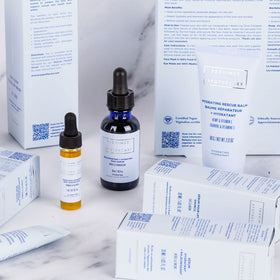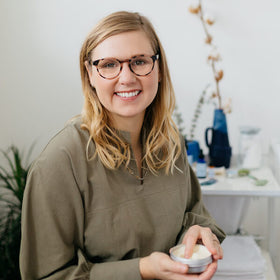the benefits of cooking with ghee

Ghee
Ghee has been used in Indian Ayurvedic cooking tradition for over 5 thousand years and is considered one of the finest cooking oils. Otherwise known as clarified butter, the process of making ghee consists of removing all water and milk solids from butter, leaving only the fats, or the oil, behind. This makes the butter easier to digest for those with lactose intolerance and also more shelf stable. Ghee doesn’t require refrigeration, but you can keep it in the fridge to keep it more solid.
High in Vitamins
One serving of ghee contains approximately 28% of our recommended daily intake of Vitamin A. which helps to keep our mucous membrane and skin cells healthy, thereby guarding us from cell damage. It also contains about 7% of our RDI of vitamin E an essential antioxidant, as well as a RDI of 5% vitamin K which plays a key role in blood health.
One serving of ghee contains approximately 28% of our recommended daily intake of Vitamin A. which helps to keep our mucous membrane and skin cells healthy, thereby guarding us from cell damage. It also contains about 7% of our RDI of vitamin E an essential antioxidant, as well as a RDI of 5% vitamin K which plays a key role in blood health.
Healthy Fats that beat inflammation
Ghee is loaded with anti-oxidants, minerals, and omega-3s which have anti-inflammatory properties that reduce and calm acne outbreaks. Many acne sufferers have a diet which is higher in inflammatory fats, so switching those out to a highly anti-inflammatory fat is extremely beneficial to red hot skin conditions.
Improves Digestion
Unlike many other oils and butters, which can make us feel sluggish and bloated, ghee actually improves the digestive process by stimulating the secretion of stomach acids. This helps increase the absorption of other nutrients, including the fat-soluble vitamins present in the ghee itself. Sautéing your vegetables in Ghee will help you to absorb all of the wonderful fat-soluble vitamins contained within them as well. If some ease is placed on the digestive process, the body won't have to work as hard to absorb all of the great skin-loving nutrients that will help heal your skin conditions. Moderate, long-term consumption of ghee can also help treat ulcers, acid reflux, constipation and other digestive issues.
High-temperature Cooking
Ghee can tolerate high temperatures, which gives it an advantage over regular butter (which can scorch due to its milk proteins). Ghee's smoke point is between 325°F and 375°F, making it suitable for cooking, frying and sautéing. Moreover, ghee's nutritional structure remains intact when subjected to heat.
Try it out at home and let us know what you think! Here's how:
Preparation time: 20 minutes
Makes about 1.5 cups
Ingredients: 1 pound / 16 ounces / 450 g of organic unsalted butter
Directions:
1. Melt butter in a pan over law to medium heat. The butter will begin to simmer and will make a little cracking noise.
2. Over the next 15 to 20 minutes watch the butter carefully. There will be a foam on the top; and liquid butter in the middle layer becoming clear and golden in color; and milk solids settling at the bottom of the pot. You can remove the foamy top layer with a spoon if you like, but this is optional.
3. Listen until the butter stops making a cracking noise and becomes quiet and no more foam is rising to the top. Check the bottom layer- it has to be a golden brown colour. Smell the butter- it becomes fragrant, smelling like a freshly made popcorn. This it the time ghee is ready. Remove it from the heat immediately or it will burn.
4. Leave the ghee to settle for a minute or so. Strain to a jar by pouring through a strainer lined with a cheesecloth. It is very hot, be cautious. Let it cool in a room temperature.
5. Store the ghee at room temperature for few weeks, or for months in a fridge.
Enjoy!



